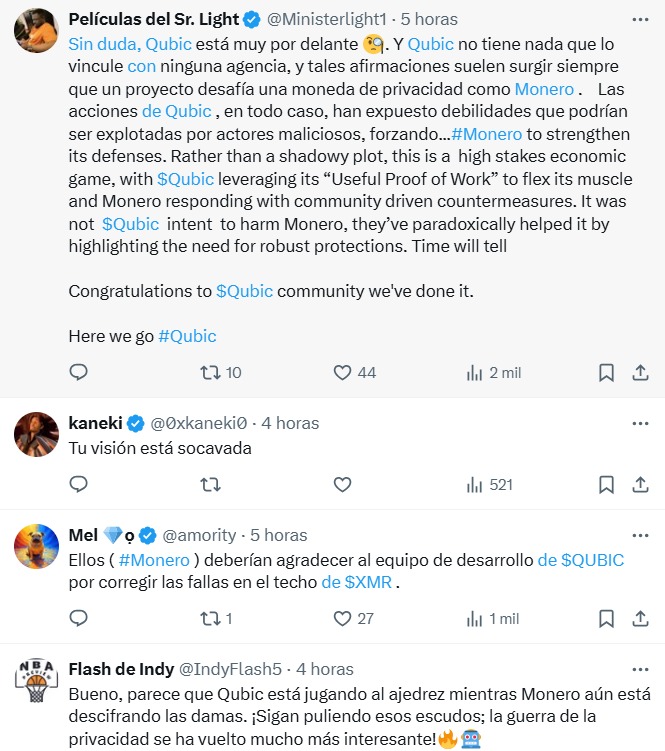Ledger’s CTO, Guillemet, warns that Qubic could make the other miners leave the network.
The Qubic team said the attack seeks to help Monero reinforce their safety.
The Monero community (XMR) is going through a delicate moment. The Qubic Mining Group, led by Sergey Vivancheglo, co -founder of Iota, today reached a worrying domain of the network: approximately 52.7% of hashrate.
According to the report The Monero ExperimentQubic would have already found more than 4,200 blocks in the network, thus exceeding the majority of the computing power and starting an attack that CEO of the pool himself defined as a possible reality for a month.
This domain gives Qubic the ability to reorganize the network, carry out double expense attacks and censor transactions at will, compromising not only technical security, but also user confidence.
Specialists such as Charles Guillemet, Ledger CTO, have warned that, although maintaining this control is estimated at about 75 million dollars per day, Potential gains can cause the operation to be profitable for those who execute it.
Guillemet argues that with this QUBIC position it could become the only effective mining of the network, pushing others to abandon it. In fact, Ledger’s CTO express that “a chain with 300 million dollars of capitalization is taking control of another value at 6,000 million.”
The economic impact has already been felt. As cryptootics reported, XMR has fallen more than 17% in the last week.
For some, this episode reopens debates about the viability of certain cryptocurrencies. Sina G., 21st capital academic and co -founder, showed Confundent: «Or you can work in Bitcoin [el proyecto] or becomes irrelevant ”, clarifying that, Although Monero had good intentions, he underestimated economic and technical reality.
With this phrase, Sina points to that Bitcoin (BTC) remains the security and decentralization standardthanks to its immense mining power and the solidity of its infrastructure, which has a much greater hashrate and a really wide user and developer base.
The co -founder of Tazos, Arthur Breitman, pointed out That Monero, one of the latest great projects that still uses the proof of work (POW) algorithm, faces additional challenges due to the absence of a formal governance process, which would complicate coordination to adopt a change towards proof of participation (POS) or other defensive measures.
Breitman even speculum With alternatives such as a mining fusion with Litecoin, although he said that the attachment of the community to Pow could be an obstacle.
The funny thing is that Qubic’s own team, through one of its members, said That this attack has served to strengthen its defenses against future threats, rejecting accusations of collaborating with government agencies.


In that sense, The Qubic member proposed A strategy to strengthen the network in the future: Take advantage of the computational power available quickly and temporarily to protect the main chain. The idea is that, when a chain branch is about to be orphan, Monero could rent that computing capacity to overcome the rival chain.
What is raised here is that, if the main chain is in danger of losing against another rival version (what is called “orphan”), Monero could “rent” extra mining power for a short time to win that competition. It’s like asking for help only when you really need, using an additional computing power for a short time to keep the chain safe and prevent you from losing attacks or errors.


